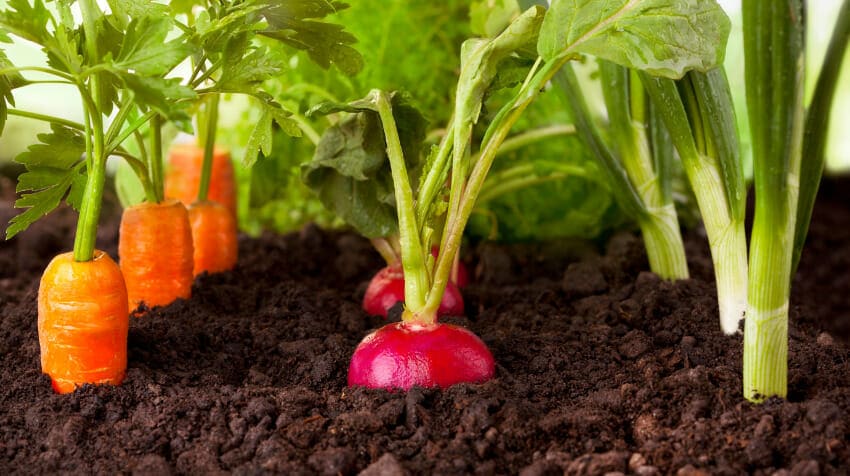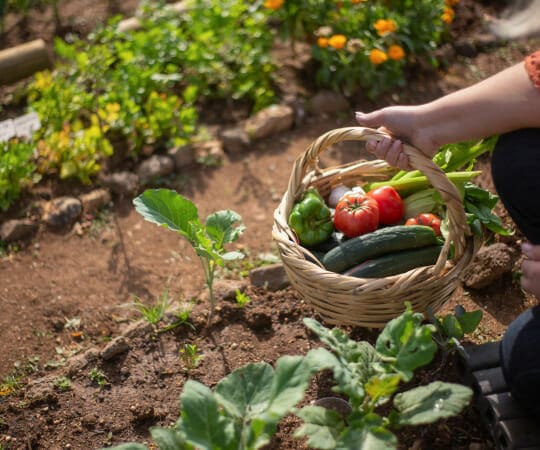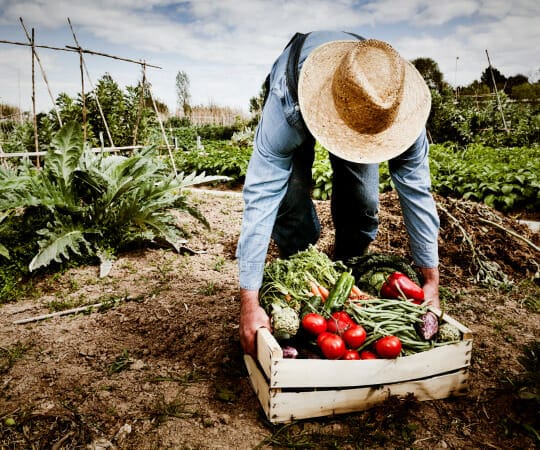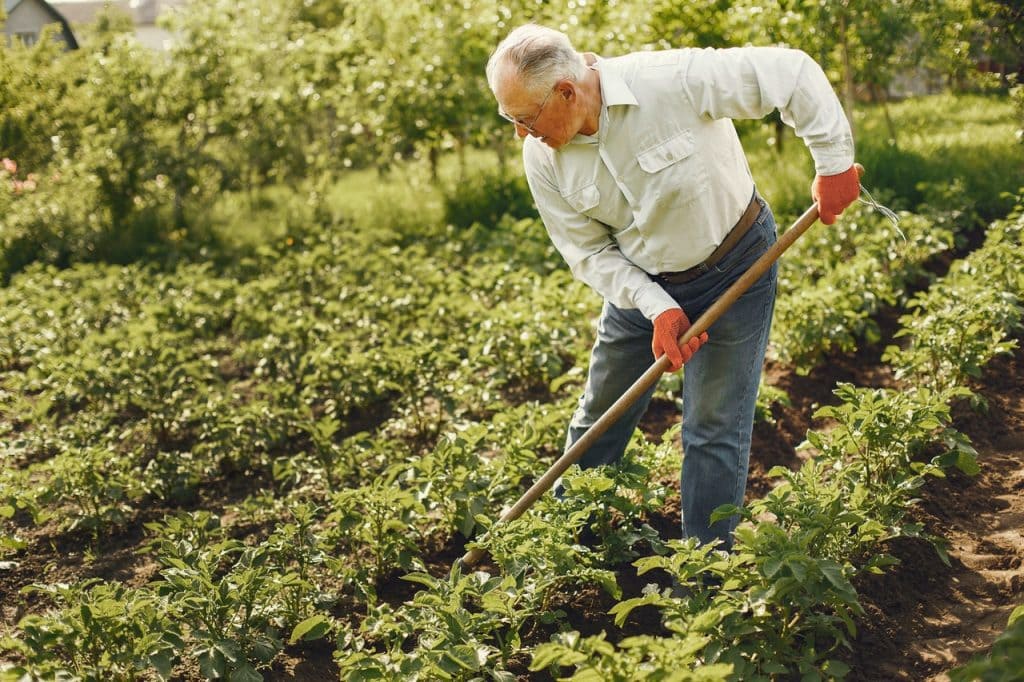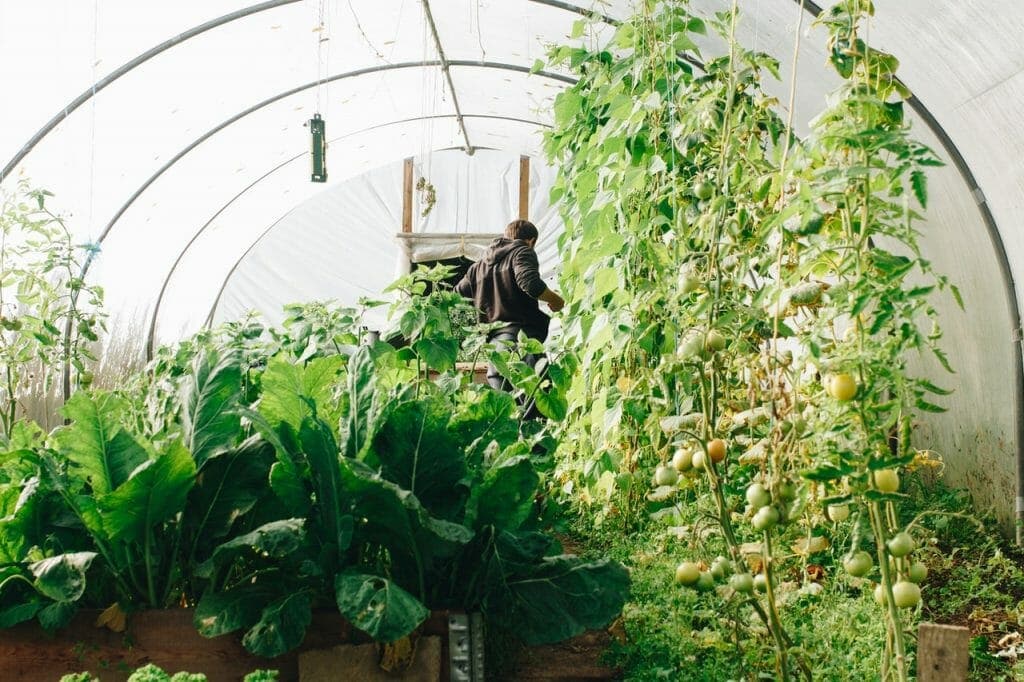From Garden to Plate: Creating a Flavorful Culinary Experience through an Edible Garden
Do you ever find yourself craving fresh, flavorful produce but feeling hesitant about the quality and safety of store-bought options? Have you considered cultivating your own edible garden but felt unsure of where to start or how to maintain it?
Look no further than this guide for cultivating an edible garden for culinary delights.
Not only does growing your own food provide a sense of satisfaction and pride in your culinary creations, but it also offers numerous benefits for both your health and the environment. From reducing carbon emissions associated with transportation to providing access to pesticide-free produce, cultivating an edible garden can be a fulfilling and sustainable practice.
Let’s dive into the steps necessary to plan, maintain, and utilize an edible garden that will satisfy both your taste buds and conscience.
Benefits of Cultivating an Edible Garden
The cultivation of one’s own produce offers a multitude of advantages beyond just the satisfaction of knowing where food comes from and fostering a deeper connection to the earth.
One of the most significant benefits is improved health. By growing your own fruits, vegetables, and herbs, you have complete control over what goes into your food, ensuring that it’s free from harmful pesticides and chemicals. Moreover, freshly harvested produce is packed with nutrients that are lost during transportation and storage.
Another benefit of cultivating an edible garden is cost savings. Growing your own produce can save you money on groceries each year. Instead of buying expensive organic fruits and vegetables at the grocery store or farmer’s market, you can grow your own for a fraction of the cost.
Additionally, an edible garden can serve as a long-term investment in your home by increasing its value while also providing fresh food for years to come.
With these benefits in mind, planning your edible garden can seem daunting, but don’t worry! There are simple steps you can follow to create a thriving garden that’ll provide delicious culinary delights throughout the year.
Planning Your Edible Garden
Get ready to roll up your sleeves and start mapping out an outdoor oasis that’ll soon be bursting with fresh ingredients perfect for elevating any dish. Planning your edible garden is crucial to ensure a bountiful harvest. Here are three things to consider:
- Companion planting: Avoid monoculture by strategically planting different crops together. Certain plants can benefit each other by deterring pests, improving soil fertility, and increasing yields. For example, plant marigolds alongside tomatoes to repel nematodes or grow basil near peppers to enhance their flavor.
- Soil preparation: Healthy soil equals healthy plants and better-tasting produce. Before planting anything, test your soil’s pH level and amend it if necessary with organic matter like compost or manure. Also, make sure the site receives adequate sunlight and drainage.
- Garden layout: Determine the size and shape of your garden based on available space and desired yield. Consider using raised beds or containers if you have limited room or poor soil quality. Sketch out a plan that includes pathways, irrigation systems, and trellises for climbing vines.
Now that you’ve got a solid plan in place, it’s time to get started on maintaining your edible garden for optimal growth and deliciousness!
Maintaining Your Edible Garden
Maintaining your edible garden is essential to keep it flourishing. You need to water and irrigate your plants to make sure they get enough moisture without being overwatered. Pest management is also important to prevent pests from damaging your crops or eating them. Additionally, harvesting and pruning help keep the garden tidy and promote new growth. By keeping up with these maintenance tasks, you can enjoy a bountiful harvest of fresh, delicious produce from your own backyard!
Watering and Irrigation
Watering your plants regularly is essential for their survival, and the method you choose can have a significant impact on their growth. Drip irrigation systems are an excellent choice for those who want to conserve water and ensure that each plant receives the proper amount of moisture. These systems deliver water directly to the roots, reducing evaporation and preventing overwatering. Additionally, they can be set up with timers, allowing you to automate your watering schedule.
Mulching techniques can also help retain moisture in the soil and reduce water usage. By adding a layer of organic material such as straw or compost around the base of your plants, you can prevent water from evaporating from the soil surface while also providing nutrients to your plants as it decomposes. This technique not only conserves water but also helps regulate soil temperature and suppress weed growth.
As important as watering is to maintaining a healthy garden, pest management is equally crucial in ensuring that your crops thrive.
Pest Management
Are pesky insects and critters ruining your hard work in the garden? Don’t let them win – learn how to effectively manage pests and protect your plants from harm.
The first step towards natural pest control is to create a healthy environment for your plants. Make sure they’re getting enough water, sunlight, and nutrients. This’ll help them develop strong immune systems that can resist attacks from pests.
Another effective way to prevent and manage pest problems is through companion planting. Some plants have natural abilities to repel certain pests, while others attract beneficial insects that prey on harmful ones. For example, planting marigolds near tomatoes can keep aphids away, while growing basil near peppers can deter spider mites.
Additionally, rotating crops each season can help prevent the buildup of soil-borne diseases and pests.
By using these methods, you can reduce the need for chemical pesticides and ensure a bountiful harvest. As you successfully manage pests in your garden, it’s important to also consider when and how to properly harvest and prune your plants.
Harvesting and Pruning
Now that you’ve put in the hard work of planting and tending to your garden, it’s time to learn about the best ways to harvest and prune your plants for maximizing yields.
The key is to harvest at the right time – when fruits and vegetables are ripe but not overripe. This will ensure that they taste their best and also encourage more growth from the plant.
For example, tomatoes should be picked when they’re fully colored but still firm, while zucchinis should be harvested when they’re 4-6 inches long.
Pruning is another important aspect of getting the most out of your garden. Regularly cutting back dead or damaged leaves will help prevent disease and pests from spreading throughout your plants. Additionally, pruning can stimulate new growth by redirecting energy towards healthier parts of the plant.
To keep things organic, consider using natural techniques such as companion planting or introducing beneficial insects like ladybugs or praying mantises into your garden.
Now that you know how to maximize yields through harvesting and pruning techniques, it’s time to start thinking about how you’ll use all those delicious fruits and vegetables in your kitchen!
Using Your Edible Garden in the Kitchen
You can get the most out of your homegrown herbs and vegetables by incorporating them into your daily meals, elevating the flavors and adding a freshness that store-bought produce simply can’t match. Here are three ways to use your edible garden in the kitchen:
- Use fresh herbs as a flavor enhancer: Add basil to tomato-based dishes, rosemary to roasted meats and vegetables, or mint to salads and drinks.
- Experiment with new cooking techniques: Try grilling zucchini or eggplant slices for a smoky flavor, or roasting beets to bring out their natural sweetness.
- Find recipe inspiration online or in cookbooks: Look up recipes that feature the specific ingredients you have on hand, or try adapting traditional recipes with your own twist using what’s growing in your garden.
By utilizing these tips for incorporating homegrown produce into your cooking repertoire, you’ll not only taste the difference but also feel a sense of pride knowing that you grew the ingredients yourself.
Now that you know how to use your edible garden in the kitchen, consider some tips for successful edible gardening.
Tips for Successful Edible Gardening
If you’re new to edible gardening, starting small and expanding gradually is a great approach. Consistency is key when it comes to nurturing your plants and keeping them healthy.
Don’t be discouraged by mistakes; they’re opportunities to learn and improve your gardening skills. By following these tips, you can successfully cultivate an abundant and thriving edible garden that’ll provide delicious ingredients for your culinary creations.
Start Small and Expand
Starting with just a few easy-to-grow herbs like basil and parsley can be a great way to dip your toes into gardening. Container gardening and vertical gardening are two options for starting small in limited spaces. You can grow herbs in pots on your balcony, or you can install a vertical garden on an empty wall.
No matter the method, starting small gives you an opportunity to learn about plant care, soil quality, and pest control without overwhelming yourself. As your confidence grows, expand your garden by adding more plants or trying different techniques.
You might want to start growing vegetables like tomatoes or peppers in addition to herbs. Or perhaps you want to experiment with companion planting or organic gardening practices. Remember that consistency is key when it comes to cultivating an edible garden; keep up with daily watering and regular maintenance tasks so that your plants thrive.
Consistency is Key
In the previous section, we talked about starting small with your edible garden. Now that you’ve got some experience under your belt, it’s time to focus on consistency. Maintaining a routine is key to a successful garden, and it can help you avoid common mistakes that beginners make.
Here are some tips for staying consistent with your edible garden:
- Water regularly: Your plants need water to survive, so be sure to stick to a regular watering schedule.
- Fertilize as needed: Different plants require different nutrients, so pay attention to their needs and fertilize accordingly.
- Prune regularly: Regular pruning will help keep your plants healthy and promote growth.
- Check for pests: Keep an eye out for any pests or diseases that could harm your plants, and take action as needed.
- Harvest consistently: Don’t let ripe produce go to waste – harvest regularly to keep your plants producing throughout the season.
By following these consistency tips, you’ll be well on your way to a thriving edible garden. However, what happens when things don’t go as planned? In the next section, we’ll talk about how learning from mistakes is just as important as maintaining consistency in your gardening routine.
Learn from Your Mistakes
You can learn valuable lessons from mistakes in your gardening journey, helping you grow as a gardener and develop a deeper understanding of the natural world around you. Reflecting on failures is an essential step towards improving your skills and knowledge.
Remember that every mistake is an opportunity to learn something new and apply it to future endeavors. One way to learn from your mistakes is by experimenting with new techniques. Don’t be afraid to try something different if what you’re doing isn’t working.
For example, if your plants aren’t thriving in their current location, consider moving them to a sunnier or shadier spot depending on their needs. By being open-minded and willing to take risks, you’ll discover innovative ways to cultivate delicious food while enjoying the process of learning along the way.
Frequently Asked Questions
What are some common mistakes to avoid when starting an edible garden?
Starting an edible garden can be exciting, but it’s important to avoid common mistakes that beginners often make.
One of the most common mistakes is not properly planning out your garden. Before you start planting, take time to research what plants will thrive in your climate and soil type.
Another mistake is overwatering or underwatering your plants. It’s essential to find a balance and give your plants the right amount of water they need.
Additionally, not providing enough sunlight or too much shade can harm your crops. A solution for this is to strategically place your garden in a spot that receives at least 6 hours of direct sunlight per day.
Finally, failing to maintain the proper spacing between plants can lead to overcrowding and limit their growth potential.
Keep these solutions in mind when starting an edible garden for a successful harvest season!
How can you ensure that your edible garden is organic and free from harmful chemicals?
Looking to start an organic edible garden that’s free from harmful chemicals?
The first step is to consider your composting techniques. By using natural compost, you can provide your plants with the nutrients they need without resorting to chemical fertilizers.
Additionally, consider pest control methods that are safe for both your plants and local wildlife. For example, companion planting can help repel pests naturally while encouraging beneficial insects like ladybugs and bees.
With these strategies in mind, you can create a thriving edible garden that’s healthy for both you and the environment.
What are some creative ways to use herbs and vegetables from your garden in recipes?
Looking for creative ways to use the herbs and vegetables from your garden in recipes? There are plenty of options!
One great idea is to focus on creative presentations. For example, you could make a salad with edible flowers or arrange your veggies in a colorful rainbow pattern.
Another option is to experiment with pairing suggestions. Try combining unexpected flavors, like mint and watermelon or basil and strawberries.
You can also use your garden’s bounty in unique ways, such as making herb-infused oils or using fresh herbs as garnishes for cocktails.
With a little creativity, you’ll be able to showcase your garden’s bounty in delicious and memorable ways!
How can you extend the growing season for your edible garden?
Looking to extend your growing season for your edible garden? Two great options are container gardening and greenhouse gardening.
With container gardening, you can move your plants indoors during colder months or adverse weather conditions. Make sure to choose a container that’s large enough for your plant and has proper drainage.
Greenhouse gardening allows you to control the temperature and environment of your plants year-round. You can grow a wide variety of fruits, vegetables, and herbs in a greenhouse as long as you provide adequate lighting and ventilation.
Both container and greenhouse gardening are convenient ways to enjoy fresh produce even when the outdoor growing season has ended.
What are some alternative methods for growing edible plants, such as hydroponics or aquaponics?
Imagine being able to grow your own fresh herbs and vegetables right in the comfort of your own home, without worrying about space constraints or harsh weather conditions.
Vertical gardening and container gardening are two alternative methods that allow you to do just that. With vertical gardening, you can utilize wall space to create a stunning display of greenery. Container gardening is perfect for those who have limited outdoor space.
Another option is hydroponics or aquaponics, which allows you to grow plants without soil by using nutrient-rich water instead. These alternative methods not only provide a practical solution for growing edible plants, but also add an element of beauty to any living space.
So why not try incorporating them into your own garden today?
Conclusion
Congratulations! You’re now a master of edible gardening, and your bounty of flavor is beyond compare.
Your kitchen overflows with fresh herbs, crisp veggies, and juicy fruits bursting with flavor. Your family and friends can’t get enough of your delicious creations, and everyone’s begging for your secret.
Thanks to your careful planning and maintenance, your garden’s become a source of pride and joy. The colorful array of plants brings beauty to your backyard while providing endless culinary possibilities in the kitchen.
With each harvest comes new inspiration, as you explore different recipes and techniques to make the most of your homegrown produce.
So go ahead, bask in the glory of your flourishing garden. Share its delights with others or savor them all for yourself – either way, you know that cultivating an edible garden was one of the best decisions you ever made.
Enjoy the fruits (and veggies) of your labor!
Related Sources

